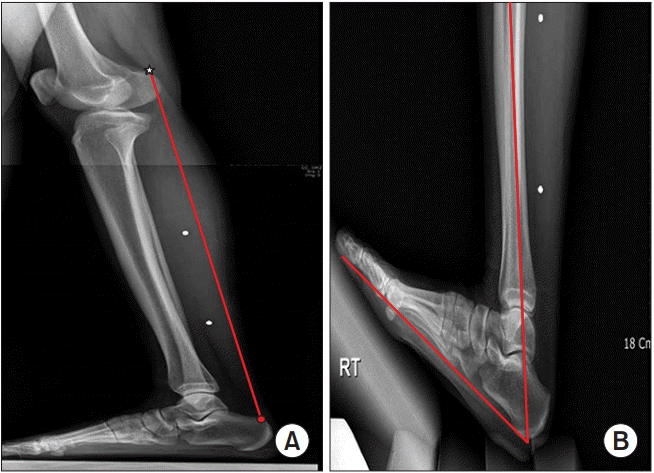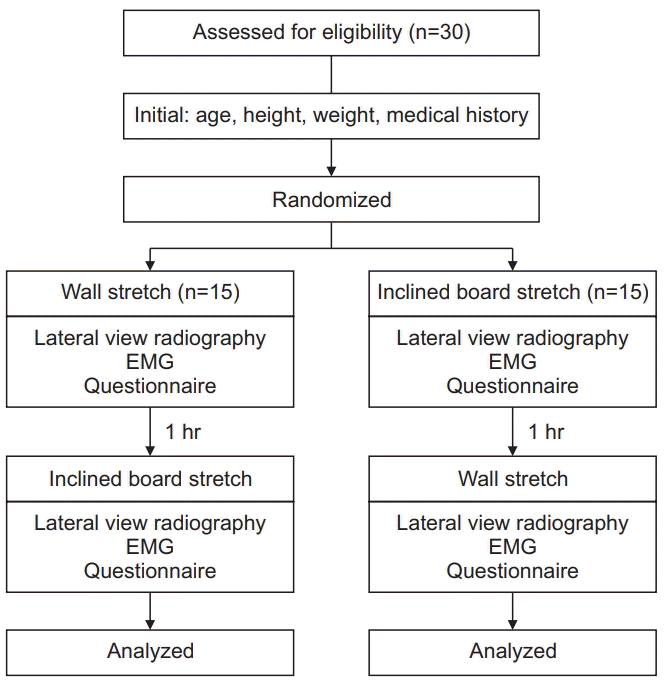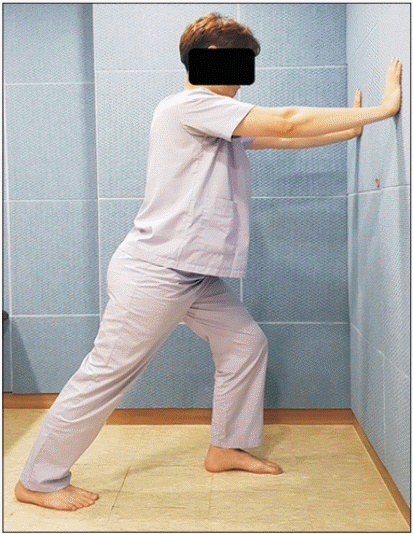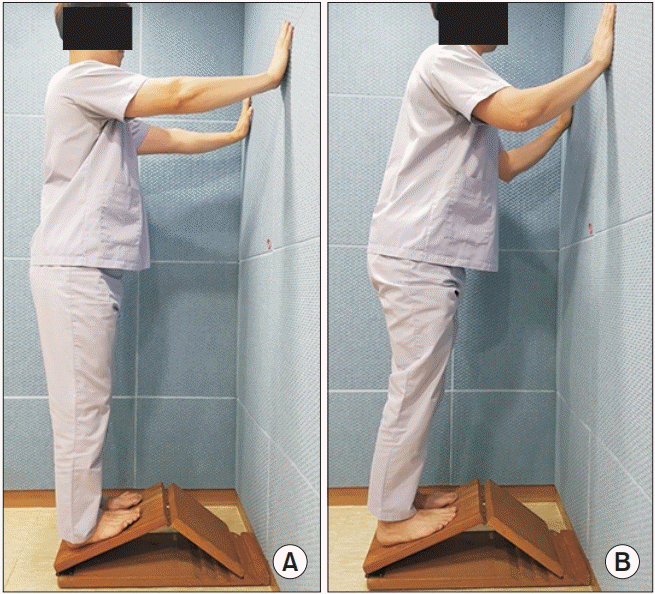1. Malhotra K, Chan O, Cullen S, Welck M, Goldberg AJ, Cullen N, et al. Prevalence of isolated gastrocnemius tightness in patients with foot and ankle pathology: a population-based study. Bone Joint J. 2018; 100B:945–52.
2. Radford JA, Burns J, Buchbinder R, Landorf KB, Cook C. Does stretching increase ankle dorsiflexion range of motion? A systematic review. Br J Sports Med. 2006; 40:870–5.
3. Baumbach SF, Braunstein M, Regauer M, Bocker W, Polzer H. Diagnosis of Musculus Gastrocnemius Tightness - Key Factors for the Clinical Examination. J Vis Exp. 2016; (113):53446.

4. Jeon IC, Kwon OY, Yi CH, Cynn HS, Hwang UJ. Ankledorsiflexion range of motion after ankle self-stretching using a strap. J Athl Train. 2015; 50:1226–32.

5. Macklin K, Healy A, Chockalingam N. The effect of calf muscle stretching exercises on ankle joint dorsiflexion and dynamic foot pressures, force and related temporal parameters. Foot (Edinb). 2012; 22:10–7.

6. Thacker SB, Gilchrist J, Stroup DF, Kimsey CD Jr. The impact of stretching on sports injury risk: a systematic review of the literature. Med Sci Sports Exerc. 2004; 36:371–8.

7. Peters JA, Zwerver J, Diercks RL, Elferink-Gemser MT, van den Akker-Scheek I. Preventive interventions for tendinopathy: A systematic review. J Sci Med Sport. 2016; 19:205–11.

8. Youdas JW, Krause DA, Egan KS, Therneau TM, Laskowski ER. The effect of static stretching of the calf muscle-tendon unit on active ankle dorsiflexion range of motion. J Orthop Sports Phys Ther. 2003; 33:408–17.

9. Kuzma SA, McNeil SP. A comparison of prostretch versus incline board stretching on active ankle dorsiflexion range of motion. UWL J Undergrad Res. 2005; 8:1–6.
10. DiGiovanni BF, Nawoczenski DA, Lintal ME, Moore EA, Murray JC, Wilding GE, et al. Tissue-specific plantar fascia-stretching exercise enhances outcomes in patients with chronic heel pain: a prospective, randomized study. J Bone Joint Surg Am. 2003; 85:1270–7.
11. Mizuno T, Matsumoto M, Umemura Y. Viscoelasticity of the muscle-tendon unit is returned more rapidly than range of motion after stretching. Scand J Med Sci Sports. 2013; 23:23–30.

12. Russell JA, Shave RM, Kruse DW, Nevill AM, Koutedakis Y, Wyon MA. Is goniometry suitable for measuring ankle range of motion in female ballet dancers? An initial comparison with radiographic measurement. Foot Ankle Spec. 2011; 4:151–6.

13. Hermens HJ, Freriks B, Disselhorst-Klug C, Rau G. Development of recommendations for SEMG sensors and sensor placement procedures. J Electromyogr Kinesiol. 2000; 10:361–74.

14. Reid D, McNair PJ, Johnson S, Potts G, Witvrouw E, Mahieu N. Electromyographic analysis of an eccentric calf muscle exercise in persons with and without Achilles tendinopathy. Phys Ther Sport. 2012; 13:150–5.

15. Min BC, Kim JH, Jeon KJ, Lee DH, Kim JS. EMG fatigue comparative study of stair ascending and descending. In : Proceedings of the Society of Korea Industrial and Systems Engineering Spring Conference; 2006 May; p. 234–7.
16. Gajdosik RL, Allred JD, Gabbert HL, Sonsteng BA. A stretching program increases the dynamic passive length and passive resistive properties of the calf muscle-tendon unit of unconditioned younger women. Eur J Appl Physiol. 2007; 99:449–54.

17. Foure A, Nordez A, Cornu C. Effects of eccentric training on mechanical properties of the plantar flexor muscle-tendon complex. J Appl Physiol (1985). 2013; 114:523–37.





 PDF
PDF Citation
Citation Print
Print






 XML Download
XML Download